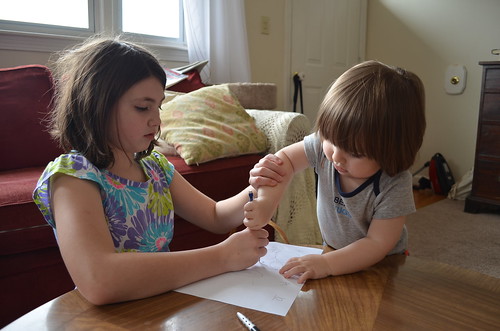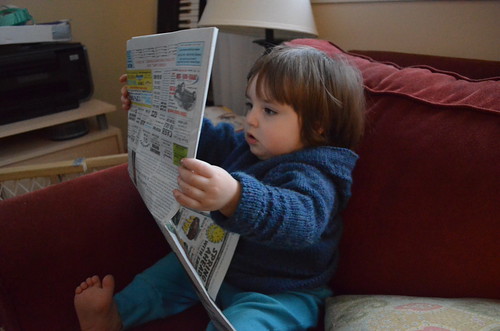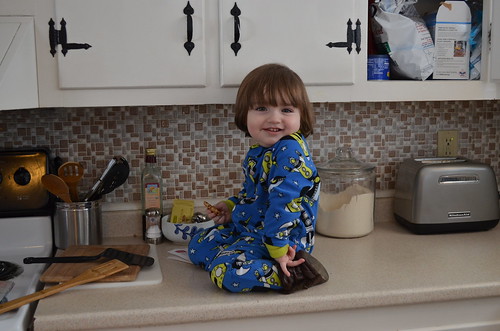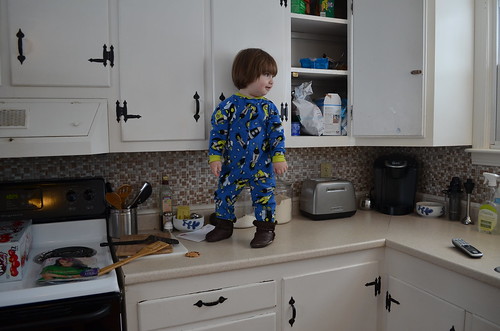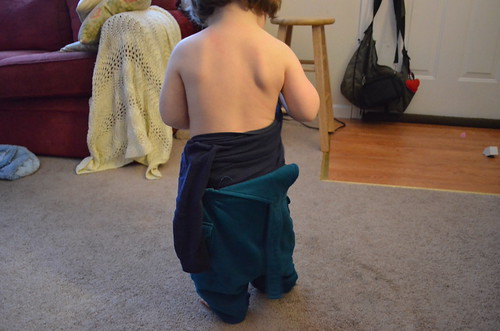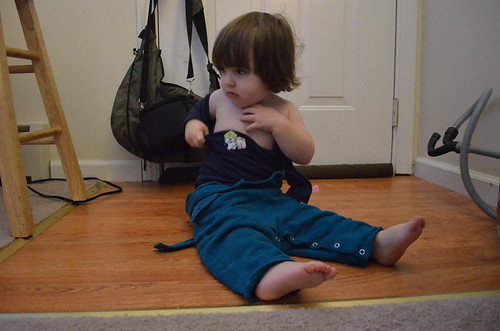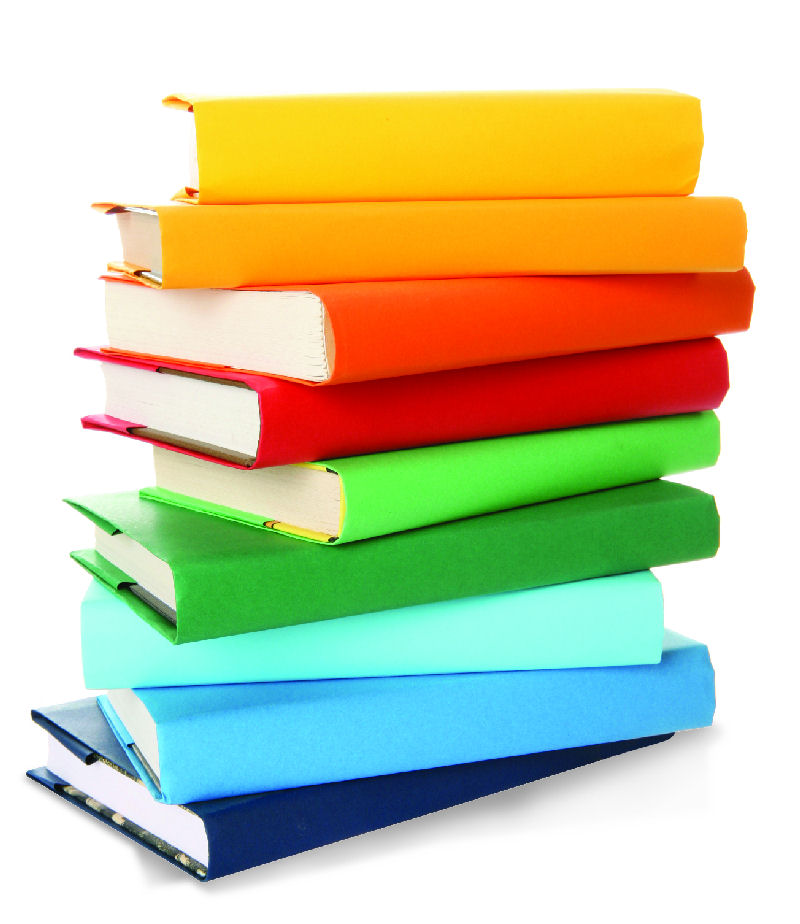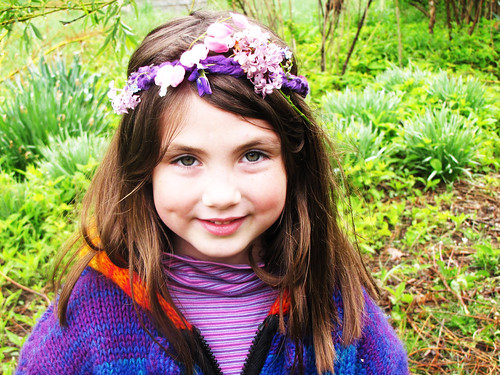This week was interesting, but not as productive as past weeks. I blame myself for this (see “Mama’s Adventures” below). In any case, I’ll start with…
Lillia’s Adventures
 Having done a fast sweep of the Indus Valley civilization last week, we moved ahead into our study of Ancient China. We are using Life in Ancient China, by Paul Challen as our spine for this unit. My one complaint about both this and the book we used for the Indus Valley civilization is that the author’s definition of “ancient” often encompasses what I consider the medieval period, which I plan to cover next year. I don’t know if that is a by-product of some sort of Western bias or Euro-centric way of thinking, or if there just isn’t enough information about these ancient civilizations to make the book interesting. My guess is that it’s probably the former. We haven’t read the whole book yet because I plan to study the Ancient Far East for at least another week or so.
Having done a fast sweep of the Indus Valley civilization last week, we moved ahead into our study of Ancient China. We are using Life in Ancient China, by Paul Challen as our spine for this unit. My one complaint about both this and the book we used for the Indus Valley civilization is that the author’s definition of “ancient” often encompasses what I consider the medieval period, which I plan to cover next year. I don’t know if that is a by-product of some sort of Western bias or Euro-centric way of thinking, or if there just isn’t enough information about these ancient civilizations to make the book interesting. My guess is that it’s probably the former. We haven’t read the whole book yet because I plan to study the Ancient Far East for at least another week or so.
 This week we also started reading The Tao of Pooh, by Benjamin Hoff. This is a wonderful introduction to the philosophy of Taoism (pronounced DOW-ISM, in case you were wondering). I chose this as our “primary source,” although it is actually a secondary source, because I think it is a really clever way to study the Tao Te Ching (pronounced DOW-DE-JEENG), an ancient Chinese text written around the 6th century BCE. In this week’s chapters we learned about the concept of the “Uncarved Block” (or P’u). As Benjamin Hoff observed, Winnie-the-Pooh is the epitome of the “uncarved block.” He is always in his natural state, not encumbered by cleverness or knowledge. Things work out for him because he does not fight his own inner nature. Having read all of the Winnie-the-Pooh stories, Lillia can really understand what Hoff is trying to say, philosophically, through the various characters in the stories.
This week we also started reading The Tao of Pooh, by Benjamin Hoff. This is a wonderful introduction to the philosophy of Taoism (pronounced DOW-ISM, in case you were wondering). I chose this as our “primary source,” although it is actually a secondary source, because I think it is a really clever way to study the Tao Te Ching (pronounced DOW-DE-JEENG), an ancient Chinese text written around the 6th century BCE. In this week’s chapters we learned about the concept of the “Uncarved Block” (or P’u). As Benjamin Hoff observed, Winnie-the-Pooh is the epitome of the “uncarved block.” He is always in his natural state, not encumbered by cleverness or knowledge. Things work out for him because he does not fight his own inner nature. Having read all of the Winnie-the-Pooh stories, Lillia can really understand what Hoff is trying to say, philosophically, through the various characters in the stories.
Life of Fred continues to be challenging. This week we learned what to do when you need to borrow from a number to subtract, but the next number available is a zero. Although Lillia got frustrated at first, after a quick review she understood and was able to complete the problem easily. I really like that Life of Fred doesn’t rely on endless repetition to teach concepts, as Lillia often understands after the first try or, at the most, no more than one or two reviews.
Lillia has been very pedagogical this week. She was intent on teaching Zane to write his letters (developmentally inappropriate, I know, but they were bonding). She was so pleased when he made an “A.” I didn’t have the heart to tell her that toddlers are really good at imitating us.
We’ve finally finished learning all of the cursive letters, and we’ll be moving on to practicing writing words!
Zane’s Adventures
This week, Zane has been doing a lot of “reading.” Of course, he’s just imitating what he sees. His family members read a lot.
Here he’s “reading” his sister’s math notebook.
He’s been an out-of-control climbing machine. This kid is a problem solver. If he wants to go up, he’ll find a way to get there.
He’s also been really interested in undressing himself (diaper included, much to his parents’ dismay). One would think overalls would be a deterrent but sadly, no.
In all seriousness, I’m pretty excited about his interest in doing things for himself. Lillia is a very parent-centered child, which is great…except when it’s not. I would love for her to get her own glass of water once in awhile. Still, every child is different, and I love them both equally despite, and for, their differences.
Mama’s Adventures
I make a lot of confessions on this blog and I try to be really honest about my shortcomings. Being an INFP personality type means I’m always striving for self-improvement. This week I am feeling a lot of self-doubt. I wonder — is homeschooling actually making a difference for Lillia? Is she learning anything? Does it even matter that I stay home, or would the family be better served by a second income? I can say with some degree of certainty that at least one of my children benefits from my being home (Zane) because he doesn’t have to spend the day in child care. Lillia is a trickier situation…
I started out this year thinking that I wanted to design my own curriculum from the ground up. I would do everything myself. But, the further along into the school year we got, the more I started to think that I must have been absolutely nuts to try and do that! I’m okay with most of what we do, but I feel like everything is very disjointed. There are no connections between the different subjects. Also, I had envisioned a much more hands-on experience for Lillia with lots of fun projects (something different than the pile of worksheets she did every day in public school). But, I haven’t been able to pull that off. I feel like she is not really engaged with the work. Knowledge for the sake of knowledge is useless. I’m looking for something more along the lines of the misattributed Yeats quote, “Education is not the filling of a pail, but the lighting of a fire.” From what I can see, there’s not much of a fire happening at our house right now.
Sure, she does the work without complaint (most days), but I can tell she’s not really interested. She’d rather be doing something else. Such is the nature of kids, I know, but I didn’t pull her out of school to bore her to death. I wanted her to experience another way of learning. I wanted her to make discoveries and have epiphanies. I wanted her little light to shine so bright that the whole world would say, “There is a child who loves to learn!” Okay…maybe my hopes were a little unrealistic. But, I still want that for her, to whatever degree it’s actually possible.
To that end, I just spent $150 for used copies of Oak Meadow’s 3rd and 4th grade syllabi. I first heard of the “inspired by Waldorf education” homeschooling curriculum from Oak Meadow about four years ago, when Lillia was wrapping up her kindergarten year at our local Waldorf school. She had an amazing year, and I am a big fan of Waldorf education (though I run away screaming from dogma, and some Waldorfians can be a little too dogmatic for my taste). Rudolf Steiner may have been looking at child development through the lens of anthroposophy, but his observations were spot on. I trust his methods because I feel that he honestly understood children in a way that most people don’t. Looking ahead to fourth grade, Oak Meadow students study Native Americans, make dioramas of local flora, and research animal behavior. Those are topics that Lillia is already interested in, so I think she will enjoy it. I love that everything is integrated (except math — we will keep using Life of Fred because we love it so much). It seems very comprehensive. And, most of all, it sounds very creative and flexible. For every lesson there is a list of optional projects. We were going to study the Middle Ages next year, and we still can. There’s no one who loves to read more than Lillia, and what I had planned was mostly just reading a spine and supplementing with library books. Once I have a chance to look over the materials, I’ll write a more in-depth review. If my books arrive in time, I will try out the third trimester of the grade three syllabus this year during our last trimester.
I feel better just knowing that I’m trying to make improvements. I’m not afraid of change, and I am humble enough to admit when something isn’t working (at least not optimally). I try to embrace all of the possibilities, and I know I’m at my best when I am striving.
“I was taught to strive not because there were any guarantees of success but because the act of striving is in itself the only way to keep faith with life.” — Madeleine Albright
Thank you so much for taking the time to read my blog.

